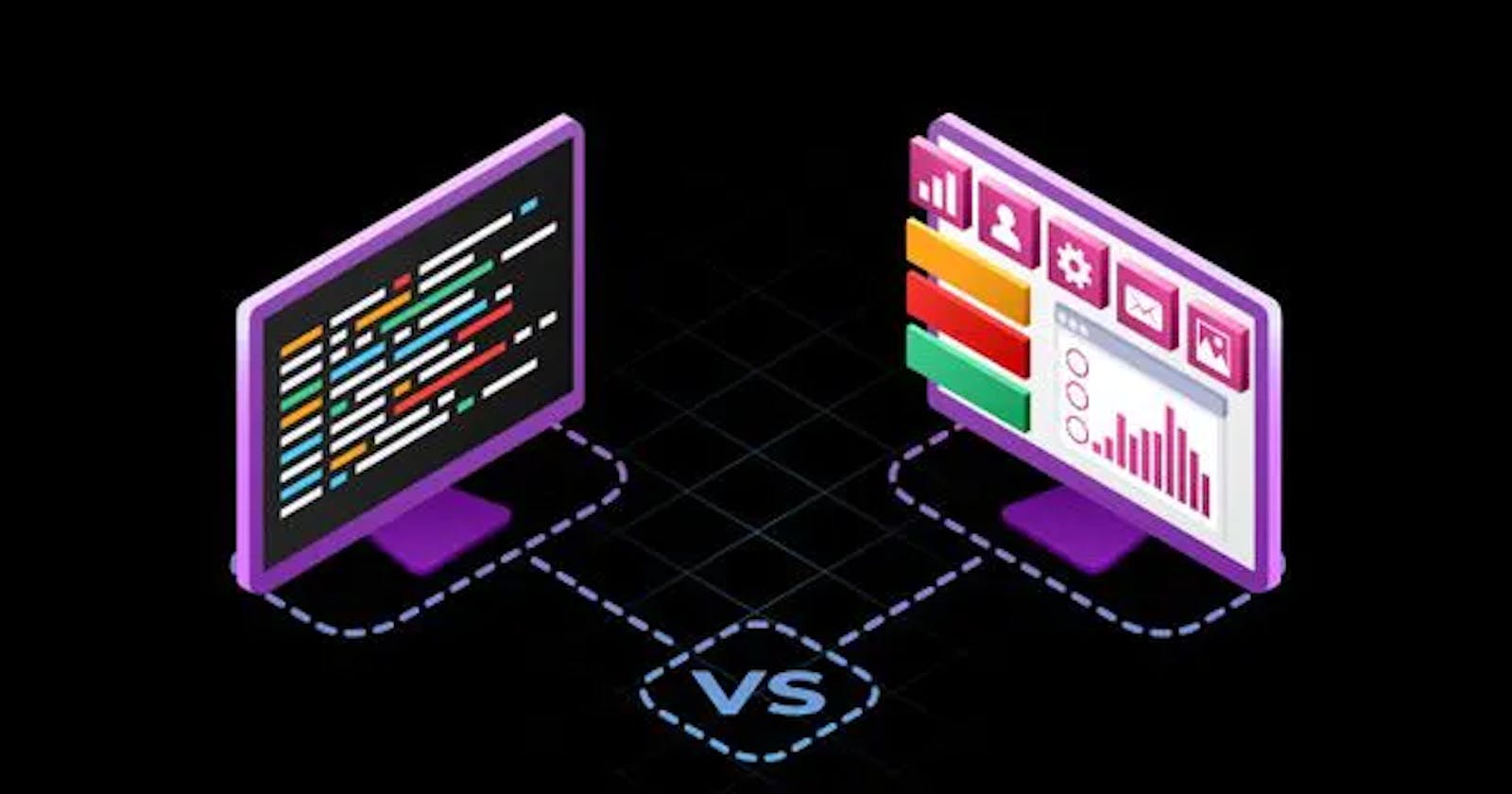The low-code no-code movement began its slow and gradual revolution during the 1970s. Now this revolution is the norm in almost every software and application category. Low-code no-code app development platforms are becoming more and more prominent in modern organizations across a wide range of industries.
Forrester expects the no-code/low-code market to reach $21.2 billion by 2022. And Gartner estimates that enterprise low-code application platforms (LCAP) will be 65% of all app creations within the next five years.
In the no-code space, developers build functional but limited apps without writing a single line of code. The low-code space focuses on professional IT developers, creating enterprise-class applications without going through the process of coding an entire app manually.
In an era where digital transformation and innovation play a critical role in organizational growth, speed and automation can mean the difference between moving forward and falling behind. To help you better understand the low-code no-code movement, let’s explore what all of these platforms really mean for your business.
What’s the Low-Code No-Code Movement?
Low-code, no-code app development platforms are experiencing unprecedented amounts of hype. Why? Because the low-code no-code movement enables businesses to keep up with the rapidly changing technology landscape by empowering software development with little to no coding.
This means you are able to move forward without having to wait in the IT queue. Requirements can be quickly documented and approved, then implemented in a matter of days. In fact, almost every mobile application development company is looking to position itself in the low-code/no-code space.
Low-code development supports digital transformation and it is responsible for creating new growth opportunities for both small and large businesses. This movement also helps IT teams be more productive by relieving the pressure to quickly deliver basic applications. Because the business can self-serve, the IT team is able to instead focus on more complex tasks.
Benefits of Low-Code and No-Code Platforms
Trying to build applications more quickly, at less cost, and with higher quality is no longer a thing of the past. Low-code platforms are making this a reality. Let’s look at the many benefits of low-code and no-code platforms.
No-code low-code development platforms deliver many benefits, but the main benefit is speed with digital transformation. When you’re building applications with a low code platform, you don’t have to spend time worrying about coding rules for traffic routing, scalability, or any other time-consuming aspect.
Reducing the time it takes to develop an app means your team gets to the production phase even faster. For enterprises, it means they have an opportunity to do a lot more by reducing a whole year’s project down to a few months—or even, a few weeks.
The development of solutions based on low-code no-code concepts further reduces the complexity of creating, testing, and deploying new applications. The reduced complexity of building new apps results in easier access to innovation to help keep up with market movements.
Low-code no-code app development platforms have transformed how companies build applications. These platforms have turned a cumbersome and costly process into an agile and efficient development process.
With low-code platforms, a development background is not needed to build applications that bring full automation to reality. Self-service applications with existing templates, pre-built forms, and elements enable a team of citizen developers to quickly build a working app with little hassle.
For more complex processes, or where custom coding is needed, these low-code app development platforms ensure a seamless way for departments to collaborate, build, and deploy applications. Building a functional prototype of a complex application provides a living set of requirements to the IT team for further development. The prototype can help you set expectations and ensure that the final product delivers on your vision.
The Risks of Low-Code and No-Code Platforms
Low-code or no-code doesn’t mean “low or no risk.” Here are some concerns to consider with low-code and no-code platforms.
No Chance for Customization Customization options vary widely from platform to platform. The modular components in low-code platforms limit your customization options. Once you’re inside a new system, you’ll want to improve a specific component or maintain one to meet your specific needs. However, instead of providing the option to customize the system, low-code no-code platforms require you to change business processes to meet their capabilities. On the other side of this, many low-code no-code platforms are making huge strides to address this.
Limited System Integration Several products and tools work together to form a digital transformation strategy. But going with a no-code approach alone can create integration problems down the road. Since you will be dealing with systems that are core to your business, you cannot afford to sacrifice custom integration for speed.
Constrained Ability to Deliver Refined User Experience When you create a custom platform, you are confident that you can rely on it because you understand every aspect of how it works.
The low-code no-code movement is putting frontline citizen developers in the driver’s seat while allowing IT to focus on critical systems and security initiatives. These platforms are flexible and robust enough to rise to the market’s toughest challenges. Organizations who “get it” will turn this power into an unfair competitive advantage.
Thanks for reading!

